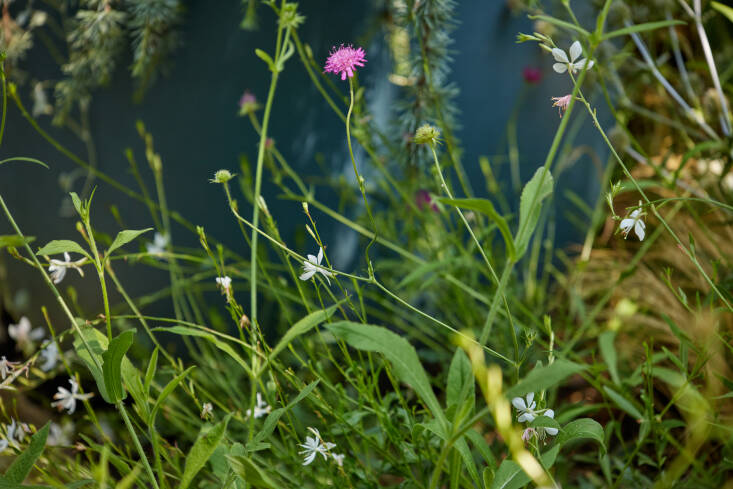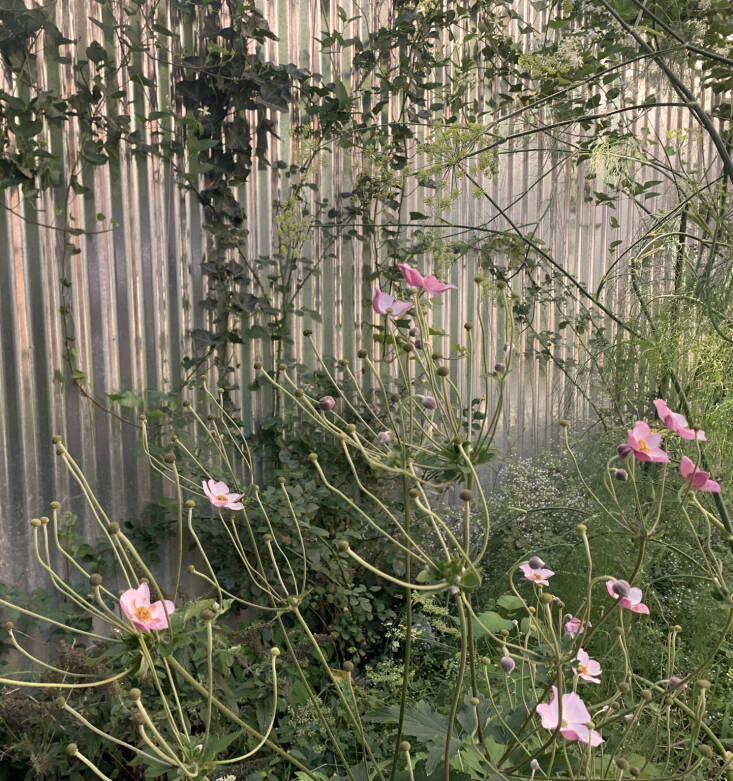


As soon as we spied landscape and urban designer Nishiel Patel‘s exceptional work on a Brooklyn Heights landmark home (see our coverage of the project here), we knew we wanted to tap her as our next Quick Takes expert. Ten months would pass before she would finally submit the questionnaire, but she had an incredibly good reason for the delay: Nishiel had given birth to a baby boy during that time, and she was trying to be more present—”with my family and friends, in my work, in landscapes,” she says—even deleting Instagram from her phone.
Nishiel’s ability to train her attention on what is in front of her, to be in the moment, to notice the minutest details is what distinguishes her projects from others. There is nothing cookie-cutter about the gardens they design; they have a point of view, a personality that we want to get to know.
Below, the native Texan (now living in NYC) gives us a glimpse into her gardening mind.

When I was a little kid, my grandparents, who are farmers in India, came to live with us in Texas for six months. My mom’s goal was to convince them to stay more permanently. My grandpa was bored IMMEDIATELY by life in suburban Houston, so he filled his time by planting the most stunning edible garden with seeds he brought over in his suitcase! (don’t at me!) We had trellises of doodhi (bottle gourd), karela (bitter melon), okra, peppers, methi (fenugreek), whatever would take. It helped that the climate in Houston worked well for these varieties of plants. In the evenings, after tending to the garden, he would take me for walks in the nearby field, and we would pick native wildflowers to bring back to my mom and grandma. Ultimately, they went back to their village in India as soon as they could and never looked back! I admittedly don’t work much with edible plants, but I feel like my work is an extension of their life’s work.

Designing a Garden: Monk’s Garden at the Isabella Stewart Gardner Museum by Michael Van Valkenburgh. It’s a beautiful book about design process, narrative, and the temporal spatial qualities of plants written by my old boss. I sort of owe everything I know about landscape to MVVA, so it makes sense that I come back to this book a lot.
This is a funny question for me because I recently took Instagram off of my phone. I can visit from my computer, but I’ve been trying to be more present in the non-digital world—with my family (I have a fairly new baby!) and friends, in my work, in landscapes.
That said, I’m obsessed with @digdelve, which feels like tales from the garden; @terremoto_landscape because you know exactly who they are and what they value from everything they share; and @joegardener whose Instagram and podcast is for every kind of gardener or landscape enthusiast who wants to get their hands dirty.

Layered. Narrative. Warm.
Morella pensylvanica. Northern bayberry is a workhorse shrub native to the Atlantic coast but has cousins (M. cerifera, M. californica, etc.) all over the US. The shrub is not only fast-growing and a habitat for local fauna, but its slender leaves with a soft green-gray color, turn a vibrant shade of copper in the fall. Young bayberry leaves are also marcescent, meaning the dried fall foliage stays on the branches in the winter, adding visual interest when most everything else is dormant.

Anemone x hybrida (Robutissima, Honorine Jobert, Wild Swan) and Knautia macedonia.
Forsythia—sorry!
Not all of the plants in your list will be available when you’re ready to plant, AND THEN not every plant that makes it into the ground will come back the next year or ever. It’s a tough lesson in letting go.
Hot take! There is no such thing as a “no-maintenance” or “ultra-low-maintenance” garden. Every garden needs attention and care as it grows and changes. Even if you planted nothing but a giant lawn (please don’t), you’d still need to mow it all the time. This doesn’t mean you need to be out there with a team of manicurists every week either. A garden with native and adaptive plants will be robust and unfussy, but someone will need to give it a helping hand from time to time. If you want your garden to look like something out of RHS Chelsea, then that’s a different story.
Less of a trend than just standard practice but every time we install a new garden, I become acutely aware of the empty plastic nursery liners that on the way to the landfill. This is obviously not a zero-sum game, and I cannot fault the trade for using the most practical/economical option available to grow plants. I just hope I get to witness the transition to viable alternatives.
Nursery plugs! It’s a very affordable way to plant a larger area or perennials on a budget. They tend to fill in pretty fast, too.
Orient a comfortable chair to face out of your biggest window and plant something that blooms just outside of it.

TIME!
Stone dust or decomposed granite—a great material when you’re on a budget. If it’s good enough for the Jardin des Tuileries in front of the Louvre, it should be good enough for anyone.
I like an easy, wide, workwear pant like Stan Rays, something I can get multiple pairs of. A few years ago, the fashion brand Bode made one-off garments for an exhibition at the James Rose House, inspired by attire that James Rose used to wear. They were beautiful pieces—relaxed, drapey, and worn-in looks that I can’t get out of my head.
Issima! They cultivate unique, hard-to-find-in-the-trade varietals of native and adaptive plants. I was introduced to this nursery when I worked at MVVA—they had kindly come over to tell us about their work and process. At the time, they were obsessively growing many different varietals of sanguisorbas (another swoon-worthy plant), and it just seemed like the experimental machinations of two artists. It is that! But they are also experts in horticulture who happen to love literature, color theory, and lots more. I admire—borderline fangirl—what they do tremendously and hope I’ve done some justice in describing it. My version of retail therapy. [See Quick Takes With: Taylor Johnston, co-founder of Issima.]
A project in a place I haven’t worked in before. For example, somewhere right on the coast where I have a chance to work within the Pine Barren plant community.
There are too many! The Monks Garden at the Isabella Stewart Gardener museum. Ladybird Johnson Wildflower Center in Austin, TX. Promenade du Plantee in Paris (the OG Highline!). I’ve never been but would really love to visit Beth Chatto’s garden in the UK.

Very few people can call themselves a true landscape expert—and I am NOT one of them. I’m a forever student in the garden world—and that’s what keeps me going. It means that we can take whatever experience we have and blend it with a desire to keep learning, researching, and experimenting.
Thanks so much, Nishiel! (You can follow her on Instagram @nishiel_patel.)
For our full archive of Quick Takes, head here.
Have a Question or Comment About This Post?
Join the conversation